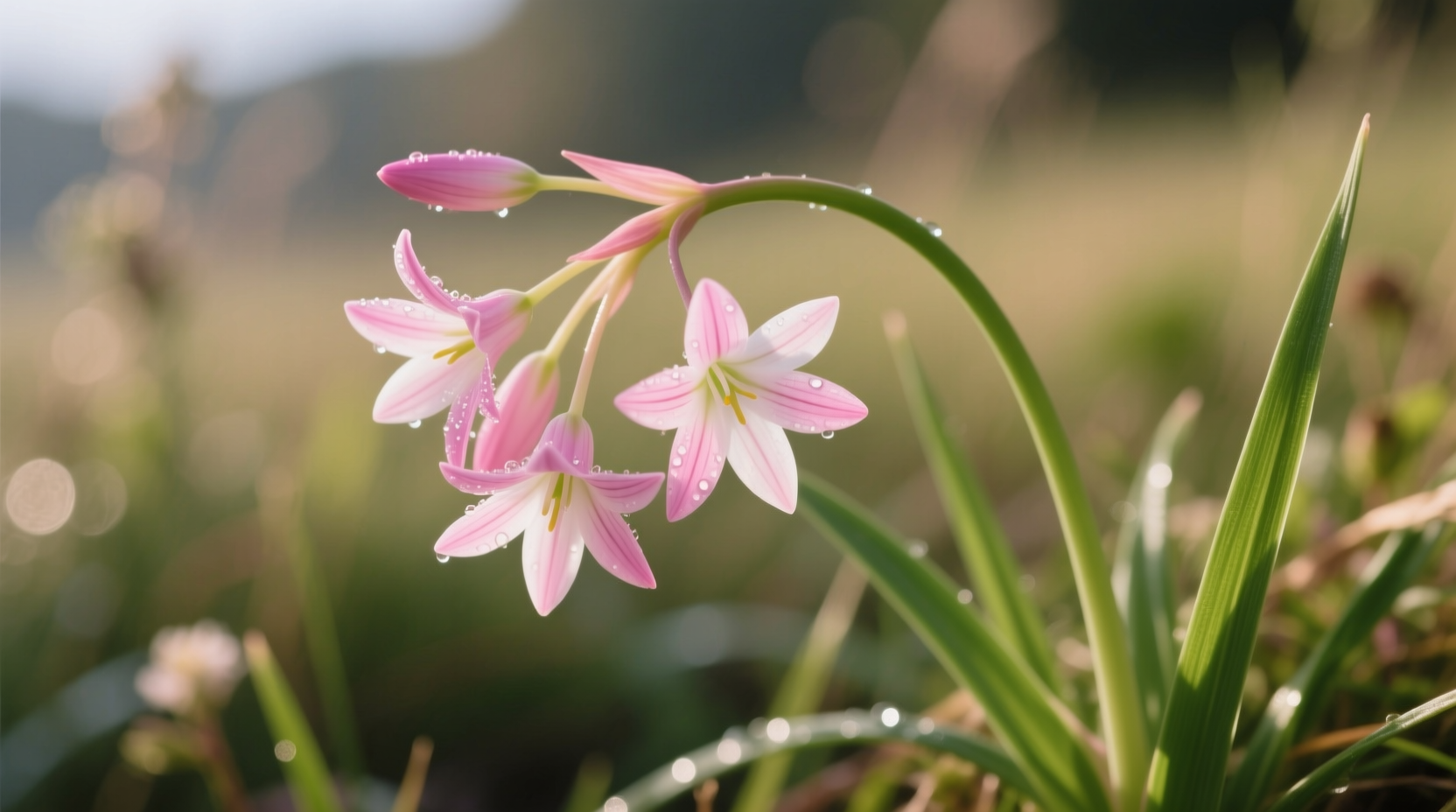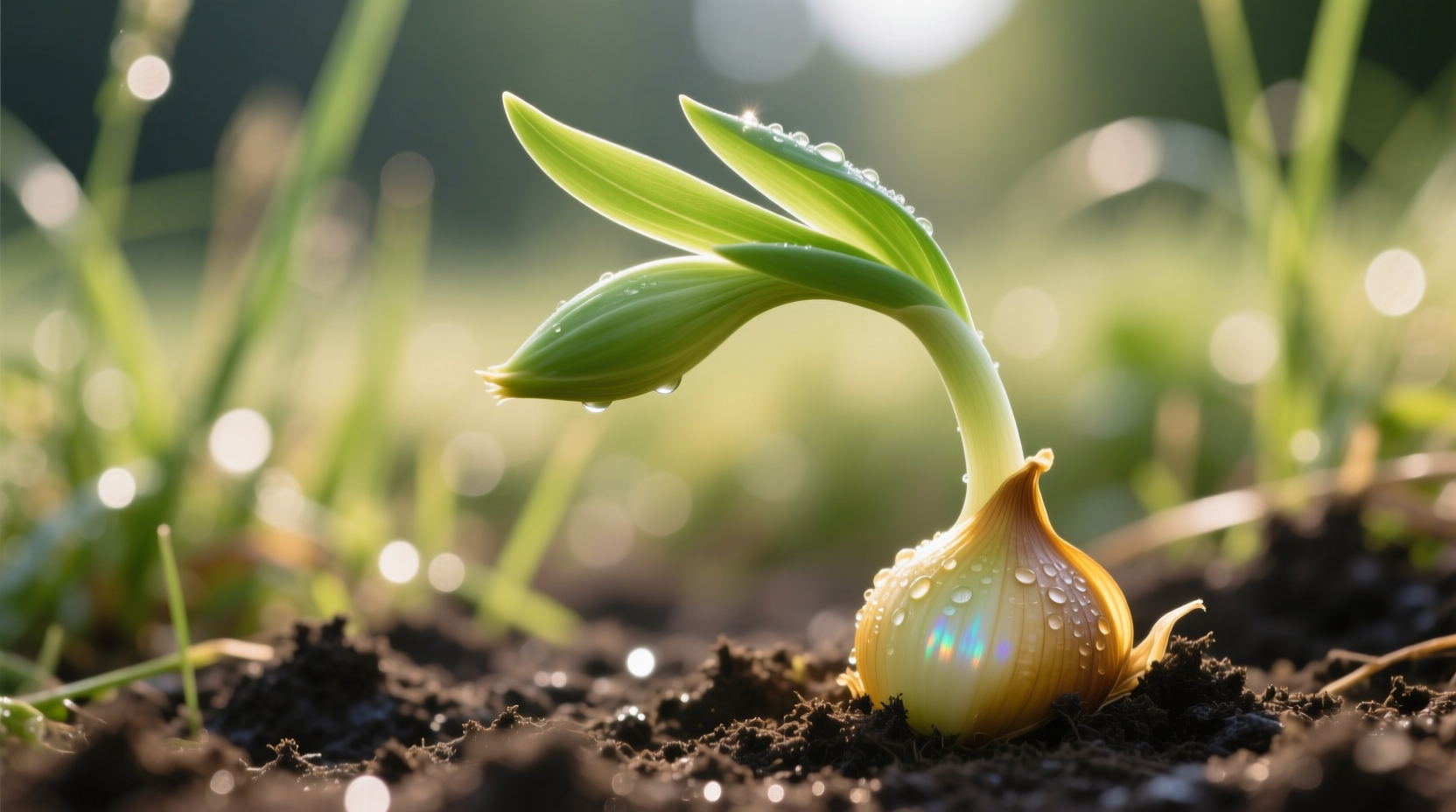The nodding onion plant (Allium cernuum) is a native North American perennial wildflower with edible bulbs and a distinctive downward-bending flower head. This hardy plant grows 6-18 inches tall in well-drained soils across USDA zones 4-8, blooming with pink to lavender flowers from June to August. Both the bulbs and greens offer a mild onion-garlic flavor perfect for culinary use.
Discover everything you need to know about growing, identifying, and using this versatile native plant. Whether you're a gardener seeking low-maintenance perennials, a forager looking for edible wild plants, or a homeowner wanting to support pollinators, this comprehensive guide delivers practical information you can use immediately.
Spotting the Nodding Onion: Key Identification Features
Recognizing Allium cernuum in the wild or garden requires attention to specific characteristics that distinguish it from similar plants. The most distinctive feature gives this plant its name—its flower heads gracefully nod downward rather than standing upright like many other allium varieties.
When identifying nodding onions, look for these key characteristics:
- Flower structure: Delicate pink to lavender bell-shaped flowers arranged in a loose cluster that bends at a 45-90 degree angle
- Height: Typically grows 6-18 inches tall, making it shorter than many cultivated alliums
- Foliage: Narrow, hollow, grass-like leaves that emerge from the base
- Bulb: Small, egg-shaped bulb with a papery outer covering
- Scent: Distinct onion aroma when leaves or bulbs are crushed
| Plant | Flower Orientation | Flower Color | Height Range | Edibility |
|---|---|---|---|---|
| Nodding Onion (Allium cernuum) | Nodding downward | Pink to lavender | 6-18 inches | Edible bulbs and greens |
| Wild Garlic (Allium vineale) | Upright | Greenish-white | 12-36 inches | Edible but strong flavor |
| Death Camas (Zigadenus venenosus) | Upright | White | 12-24 inches | Poisonous—avoid! |
This comparison table highlights why proper identification matters—nodding onion's closest dangerous look-alike, death camas, grows in similar habitats but has upright white flowers and no onion scent. Always verify plants using multiple characteristics before consumption.
Where Nodding Onion Thrives: Optimal Growing Conditions
Nodding onion naturally grows across much of North America, from southern Canada through the eastern and western United States. According to the USDA PLANTS Database, it's native to 44 U.S. states and multiple Canadian provinces, demonstrating remarkable adaptability to different climates.
For successful cultivation, provide these growing conditions:
Soil Requirements
Nodding onion prefers well-drained, sandy or rocky soils with neutral to slightly alkaline pH. It tolerates poor soil conditions better than many garden plants, making it ideal for challenging sites. Avoid heavy clay soils that retain too much moisture, which can cause bulb rot.
Sun Exposure
This plant performs best in full sun to partial shade. In hotter southern regions, afternoon shade helps prevent stress during peak summer temperatures. Northern gardeners can plant in full sun exposure with excellent results.
Water Needs
Once established, nodding onion demonstrates excellent drought tolerance. Water deeply but infrequently during the first growing season to encourage deep root development. Mature plants typically require no supplemental watering except during extended drought periods.
Culinary and Medicinal Applications of Nodding Onion
Both Native American tribes and modern foragers value nodding onion for its edible properties. The entire plant offers culinary potential with a milder flavor than cultivated onions.
Culinary Uses
All parts of the nodding onion are edible:
- Bulbs: Small but flavorful, excellent raw in salads or cooked in soups and stews
- Greens: Tender leaves work well as a scallion substitute in fresh applications
- Flowers: Edible blossoms add visual appeal and mild onion flavor to salads
The flavor profile resembles a cross between onion and garlic but with less intensity, making it versatile in recipes where you want subtle allium notes without overwhelming other ingredients.
Traditional Medicinal Applications
Historical records from the University of Michigan's Native American Ethnobotany database indicate various indigenous tribes used nodding onion medicinally. The Cherokee applied crushed bulbs as a poultice for wounds, while the Iroquois used it as a digestive aid. Modern research confirms allium species contain beneficial organosulfur compounds, though specific studies on Allium cernuum remain limited.

Planting and Care: A Seasonal Guide
Whether you're establishing nodding onion in a native plant garden or harvesting it from the wild, understanding its seasonal growth patterns ensures success.
Planting Timeline
- Fall planting: Best time to establish new plants—sow bulbs 2-3 inches deep before first frost
- Spring planting: Start seeds indoors 8-10 weeks before last frost or direct sow after soil warms
- Natural propagation: Plants self-seed readily in suitable conditions
Seasonal Maintenance
Nodding onion requires minimal care once established. Follow this seasonal maintenance schedule:
- Spring: Monitor emerging growth; thin seedlings if overcrowded
- Summer: Enjoy blooms and harvest greens; allow flowers to set seed for natural propagation
- Fall: Divide clumps every 3-4 years to maintain vigor; plant additional bulbs
- Winter: No special care needed—plants are fully dormant and cold-hardy
Sustainable Harvesting Practices
When foraging nodding onion from the wild, follow these ethical harvesting guidelines from the United Plant Savers organization:
- Never take more than 10% of plants in any given patch
- Use the "rule of thirds"—take one-third, leave one-third, and let one-third regenerate
- Harvest only from healthy, abundant populations—not endangered or protected areas
- Use a digging tool to carefully extract bulbs without damaging surrounding plants
- Replant small bulbs to maintain population sustainability
These practices ensure nodding onion populations remain healthy for future generations while providing you with a sustainable harvest.
Common Questions About Nodding Onion Plants
Here are answers to frequently asked questions about this versatile native plant:











 浙公网安备
33010002000092号
浙公网安备
33010002000092号 浙B2-20120091-4
浙B2-20120091-4